"...a new generation, a new age, must develop forms and tenors for their interior and exterior worlds which correspond to its desire for well-being and its ideals" wrote Frankfurt city mayor Ludwig Landmann in 1926.1
With the exhibition Moderne am Main 1919-1933 the Museum Angewandte Kunst Frankfurt explore how such developments were approached and realised in Frankfurt and environs, and by extrapolation explore the contribution made by the region to the evolution of inter-War understandings of architecture and design, and the legacy that remains.
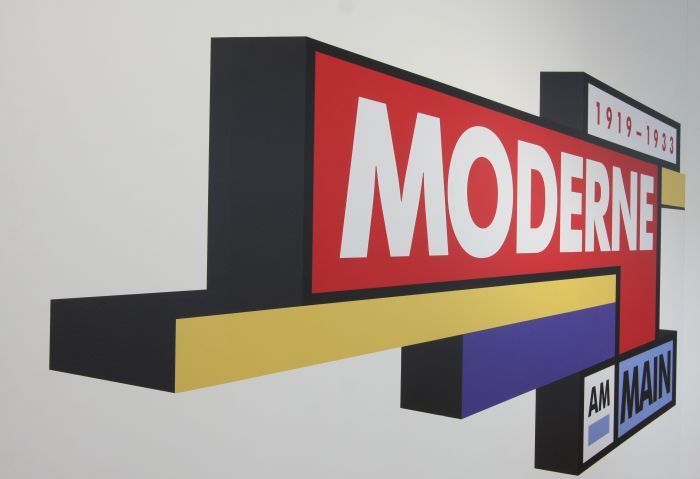
Although considerations on the development of architecture and design in the early decades of the 20th century in Germany tend to focus on Weimar & Dessau, the truth is, and as so often with the truth, a lot more complicated. And a lot more interesting. Quite aside from Bauhaus's near(ish) neighbours in Leipzig, Halle and Dresden, the developments of the era were also given varying degrees of impetus from centres as diverse as, and amongst many, many others, Munich, Düsseldorf, Hagen, and the contemporary German State of Hessen: the establishment in 1899 of the Artists Colony on the Mathildenhöhe in Darmstadt helping foster Jugendstil, while two decades later, and 30 kilometres further north, Frankfurt was equally important for the development of what we understand today as International Modernism.
Popularly known under the name Neues Frankfurt* - New Frankfurt - the years between the wars saw Frankfurt and environs develop as a major centre of both experimentation and practice across a wide range of creative and technical disciplines; experimentation and practice which are however often reduced to an urban planning project. And a kitchen. By way of helping explain that the inter-War years in and around Frankfurt were about a lot more, and also to help better place the contribution made by the region and its protagonists in the wider developments of the period, 2019 sees a triumvirate of themed exhibitions being staged in Frankfurt, the start being made with the Museum Angewandte Kunst and the exhibition Moderne am Main 1919-1933.
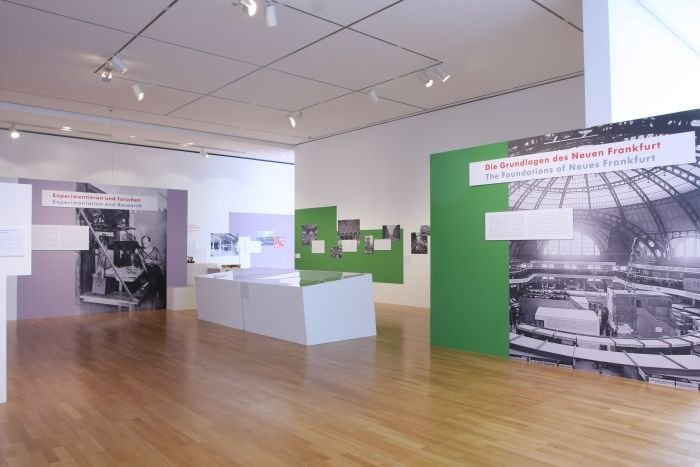
Because nothing exists in isolation, least of all new developments in understandings of architecture and design, Modern am Main 1919-1933 opens with a virtual reality installation conceived by Nadine Auth and Caspar Schirdewahn and which introduces visitors to those politicians, designers, architects and industrialists who contributed to that which follows, and for all the networks which enabled them to turn their contributions into something more meaningful, into a result greater than the sum of its parts. Including, and arguably as one of the central nodes in the network, the node from which, in many regards, everything else evolved, the above quoted Ludwig Landmann.
Elected Mayor of Frankfurt in 1924 Ludwig Landmann, as previously discussed, had a vision for, if you will re-establishing Frankfurt's relevance as an international gateway and hub: since the middle ages Frankfurt's position, not only on the Main and in close vicinity to the Rhein, but also on major north-south and east-west overland trade routes, had seen it develop as an important centre for commerce, it was, for example, in Frankfurt that Hanseatic merchants would meet and trade with their colleagues/adversaries from southern Germany, the alpine regions and the contemporary France, Hungary, Poland, et al. And a trading tradition which made Frankfurt one of the most important European meeting places, and a tradition which continued unbroken into the 20th century. Landmann sought to extend Frankfurt's position and influence beyond commerce and to develop Frankfurt as a city where new ideas for the present and the future society could be explored and developed, where, as Museum Angewandte Kunst director Matthias Wagner K put it, a new urban society could be formed. And then use its position to disseminate those ideas further afield.
As a first step to realising his vision Landmann, in 1919, and while serving as the city council's Head of Economic Development, oversaw the post-War re-establishment of the Frankfurt Fair; in effect using that which had once helped Frankfurt develop as an important international hub to engender a new era of development, and thereby ensured that in the immediate post-War years the city had an international visibility. In addition to the Fair itself, in 1921 the so-called Werkbundhaus was opened, a building which not only provided a permanent exhibition space for the Deutsche Werkbund, and thereby for its members' understandings of contemporary art and design, but also hosted a series of temporary exhibitions, again, primarily of contemporary understandings of art and design. And thereby helped foster a contemporary, modern spirit in the city and amongst its industrial and commercial sectors.
And while things started well, the economic realities of the period meant that in the course of the 1920s the importance of the Fair gradually faded; however, its contribution to both re-establishing the reputation of post-War Frankfurt and also mediating the new ideas of the age, allowed two further cornerstones of Landmann's vision to pick up the baton: the Kunstschule and the Municipal Building Department.
Institutions who's contribution to the developments of the period form a large part of Moderne am Main.
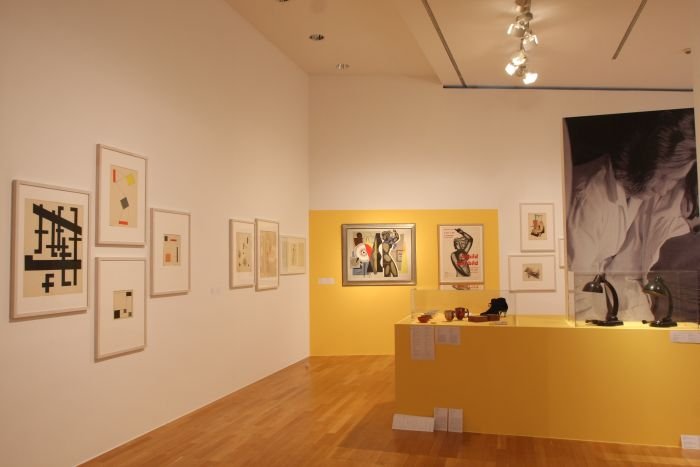
A year after his election to Mayor Ludwig Landmann appointed Ernst May as Head of the Municipal Architecture and Urban Planning Department and Martin Elsaesser as Buildings Director, thereby initiating the architectural and urban planning programmes, and kitchen design project, which popularly define inter-War modernist functionalism in Frankfurt. Architectural and urban planning programmes necessitated by the prevailing realities in the contemporary Frankfurt; yet a necessity which allowed not only for the exploration of new building and planning methods but, and as discussed in context of the 1929 Congrès internationaux d’architecture moderne in Frankfurt, new financing methods.
And while the architecture, urban planning and kitchens are covered in Moderne am Main, 'tis but briefly, their big moment will however come real soon in the Deutsches Architekturmuseum's contribution to the triumvirate. Yet although brief, through presentations of, for example, the standardisation that was practised in Frankfurt, or the role of open spaces in the urban planning, Moderne am Main does allow for a nice introduction to not only the architecture, urban planning, and kitchen design, but also how such were integrated components of a wider composition.
Much more the focus of Moderne am Main, and as one would expect in an applied art and design museum, is the product, lighting and furniture designed for, and in association with, the architecture and urban planning.
A particularly pleasing example of such is a re-creation of a park bench by Ferdinand Kramer which in the 1920s and 30s was part of the Frankfurt cityscape; interesting, and not uncomfortable, as the bench is, much more interesting for us is the fact that the re-creation was produced by Frankfurt based co-working workshop space tatcraft. For surely in any Neues Frankfurt 2.0, in any 21st society looking to develop "forms and tenors for their interior and exterior worlds which correspond to its desire for well-being and its ideals", co-working, maker-spaces, open design and sharing economies, as in real ones, not those Californian ones that pretend to be about sharing but are just about exploitation in the interests of profit, would be a central feature.
Surely?

While the Frankfurt Municipal Architecture and Urban Planning Department were developing the fabric of the city anew, and experimenting with new ideas and new practices, the Kunstschule Frankfurt was not only training a new generation of creatives, but also serving as an important partner for those local industries looking to engage with the spirit of the age, with the new understandings of form, function, aesthetics developing and with the new material and technical possibilities.
Established in 1924 through the fusion of the Arts and Crafts School and the Städelschule art college, and thus at the same time as it was becoming increasingly clear Bauhaus would have to leave Weimar, the school's director Fritz Wichert did attempt to persuade Gropius to bring his school to Frankfurt. Unsuccessfully. Did however successfully manage to persuade several Weimar Bauhäusler to move to Frankfurt rather than Dessau, including the likes of Josef Hartwig, Karl Peter Röhl, Adolf Meyer and Christian Dell, examples of the latter's lighting design being liberally distributed throughout the exhibition. Indeed so copious are the examples that "The Lighting Design of Christian Dell" would be a valid sub-heading for the exhibition. Which isn't a criticism, far from it, we're all in favour of more Christian Dell, for all when, as in Moderne am Main that presentation puts his works not only in context of the development of electric lighting of the period, but also in context of the role Frankfurt played in that development.
Beyond works by Dell, and further members of the schools teaching staff, Moderne am Main also presents examples of works produced by its students and graduates, by those who learned in this spirit of experimentation and evolution, and subsequently contributed to its further development, including a very fulsome presentation of typography works by Lieselotte Müller, many, though not all, for the Bauersche Gießerei; and a collection of works, which, and as recently noted in context of the Wekbundarchiv - Museum der Dinge's exhibition Commercial Design instead of Applied Art? neatly explains how a new clarity and reduction in the graphic art of the period not only reflected the clarity and reduction in 3D design, but also helped support and advance the establishment and acceptance of new conventions and understandings. Something particularly true in the case of Neues Frankfurt which famously had its own typeface, the programmatically named Futura by Paul Renner.
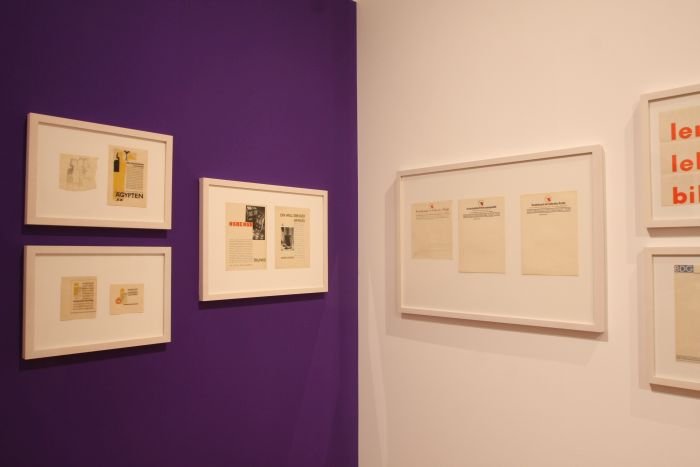
Beyond the pure institutional contributions Moderne am Main also presents examples of how in a wide range of media and disciplines Frankfurt and environs played an important role in the developments of the period: for example, in film through the works of Oskar Fischinger; for example, in music through the works of Paul Hindemith, and contributions which remind us, and with apologies to all in Düsseldorf, the roots of popular electronic music can be found more on the Main than Rhein: for example in furniture by the likes of Martin Elsaesser, Franz Schuster or Ferdinand Kramer: predominately wooden furniture, reduced, simple, unobtrusive, as one would expect of the period, but wooden and not the tubular steel so popularly, and lazily, attributed to the period through associations with Bauhaus. Steel tube furniture which history, albeit at times unwillingly, recalls, never sold that well. As opposed to wooden furniture, which always has.
Or for example, in photography through the works by the likes of, and amongst others, Gisèle Freund, Ilse Bing, Grete Leistikow, Elisabeth Hase, and which in the artistic works, again, express a clarity and reduction, while in the documentary works reflect the social and political realities of the period, and which through the number of female protagonists, underscores the importance of female creatives to the development of photography in Germany. And not just photography, through protagonists such as the above named Lieselotte Müller, but also Lilly Reich, Margarethe Klimt or Lucy Hillebrand, amongst many others, Moderne am Main makes very clear that the developments of the day were every bit due to the contributions of female creatives as male.
The exhibition ends with just such a contribution, the Frankfurter Kitchen by Margarete Schütte-Lihotzky: as a virtual reality 360 degree panorama of still existing original examples created by the Frankfurt based photographer Laura J Gerlach, and also the Museum Angewandte Kunst's own original example.
And a very pleasing decision as on the one hand it brings the visitor into the museum's permanent collection exhibition, but also because, in effect, the exhibition ends with that most popularly known aspect of the Neues Frankfurt era, and therefore allows visitors, assuming that is they have been concentrating on the way round, to place it in a much more probable and accurate context. At least in terms of its relation to Neues Frankfurt.
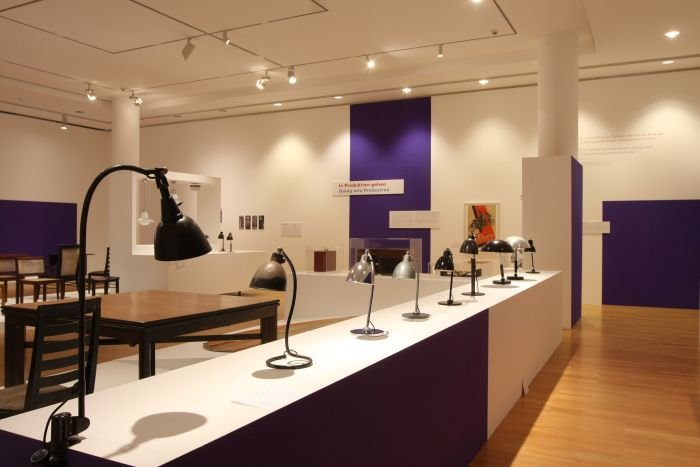
Presenting some 500 objects from some 50 creatives across seven thematic sections, Moderne am Main 1919-1933 is an open, clearly defined, neatly paced exhibition whose intelligently judged breadth bequeaths it a depth one wouldn't necessarily expect; if a breadth that means as an exhibition Moderne am Main can do no more than provide an introduction to its various topics. However, and as we often argue, a mark of any good exhibition is that encourages you to do more research on your own. Which we're certainly planning doing.
And which all just leaves one question unanswered, aside from the housing estates dotted across the city, what remains of Neues Frankfurt and the efforts of the inter-War Main protagonists today?
Arguably nothing. Save a kitchen. But equally arguably the spirit and motivation of the times, the, as noted above, desire to form a new urban society.
And that is one of the things that, for us, characterises projects such as Neues Frankfurt, is that which in many regards separates the inter-War Modernists from the pre-War Art Nouveauists, the latter may have taught and informed the former, but they then adapted that understanding, placing a much more central focus on designing for the needs of the contemporary society, designing with the aim of improving the lot of the masses rather than enriching the spaces of the wealthy, of designing to encourage social equality.
A change partly, entirely?, forced by the social, demographic, political and economic consequences of the First World War, or as Ludwig Landmann phrased it in 1926, "the war did not turn out to be a pure destroyer but a formidable creator of the new"2; Neues Frankfurt and the associated developments, represent, in many regards, some of the clearest proposals as to how this creative force could be best and most sustainably harnessed.
Discussions on architecture and design all too often become focussed on the objects, logically; but equally, arguably more, important is why those objects came to be, Moderne am Main succinctly and comprehensibly helps you approach a clearer understanding of just such.
And thereby tends to indicate that the most important legacy of the period under review isn't the housing, the fonts, the lamps, not even the kitchen, but what the spirit, motivation and desire that underlies their creation can teach modern society, and that, arguably, since the first decades of the 20th century a key responsibility of artists, architects and designers has been to help "...a new generation, a new age, [must] develop forms and tenors for their interior and exterior worlds which correspond to its desire for well-being and its ideals"
Moderne am Main 1919-1933 runs at the Museum Angewandte Kunst, Schaumainkai 17, 60594 Frankfurt until Sunday April 14th.
1Zum Geleit, Ludwig Landmann, Das Neue Frankfurt. Monatsschrift für die Fragen der Grosstadtgestaltung Jahrg 1, Nr 1, Okt/Nov 1926
2ibid
* As is the way with German, Neue, can exist in various forms Neue, Neuen, Neues, Neuer, Neuex etc.... For the sake of simplicity, and because it scans most satisfyingly, we're calling the project Neues Frankfurt.
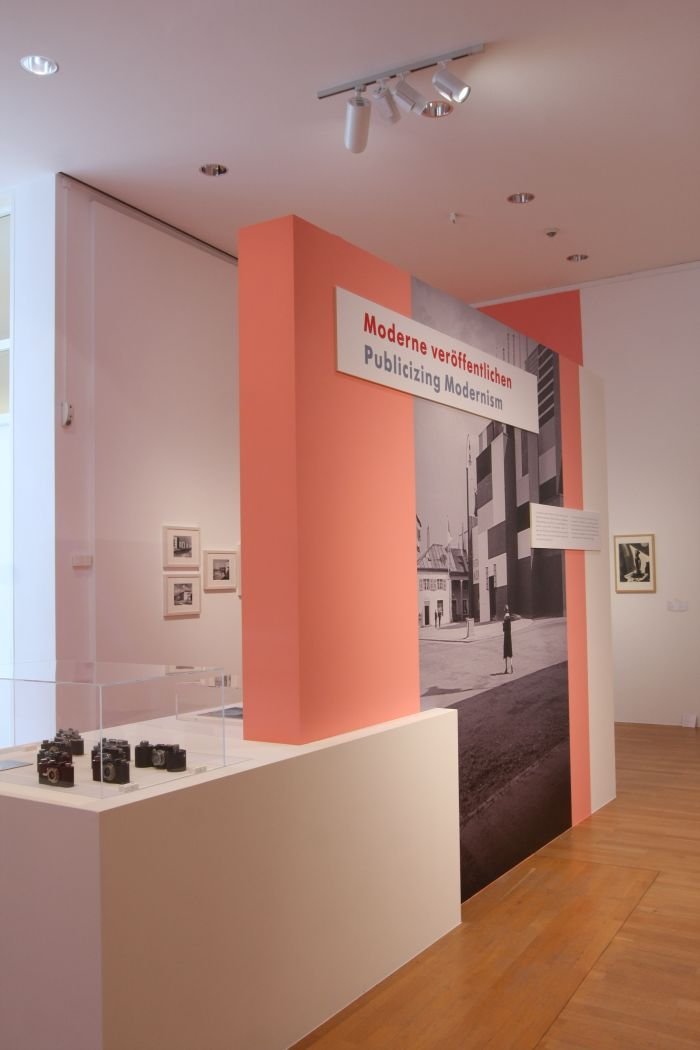
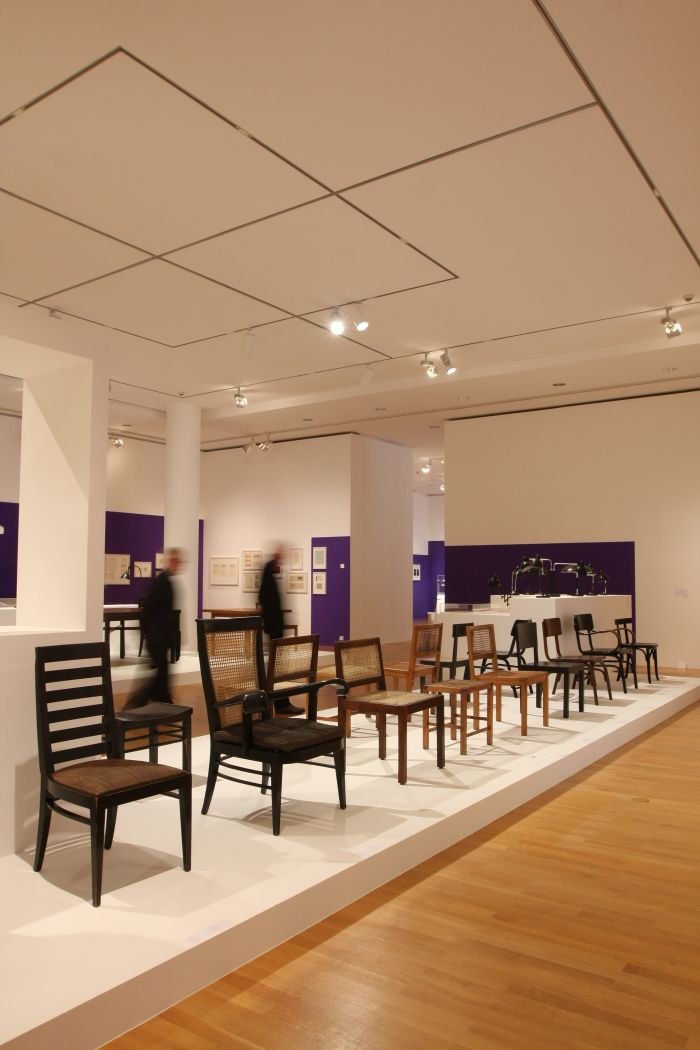
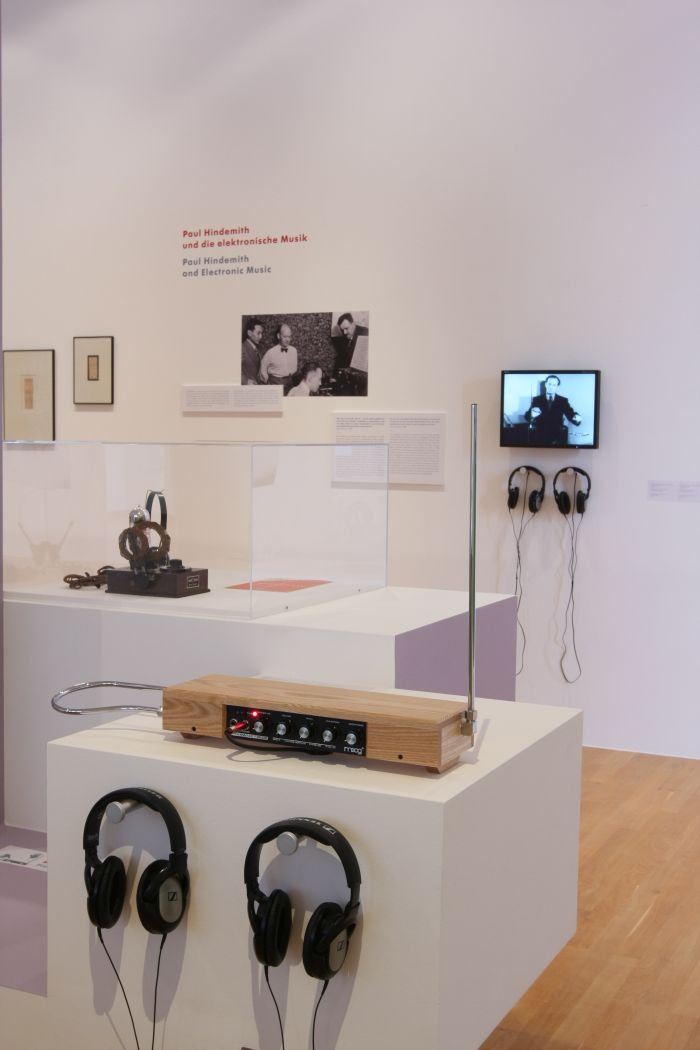
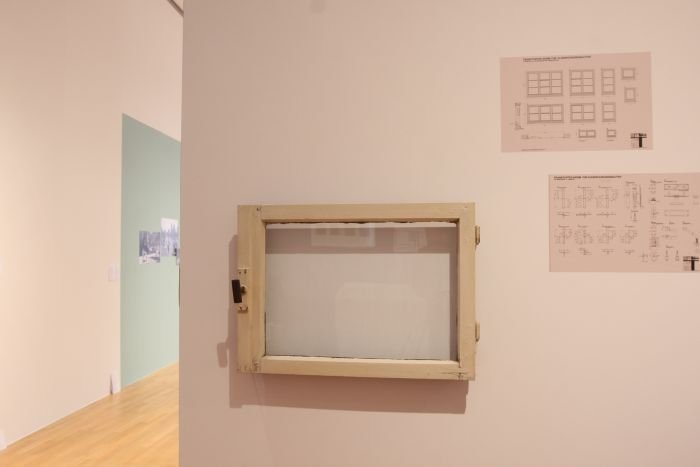
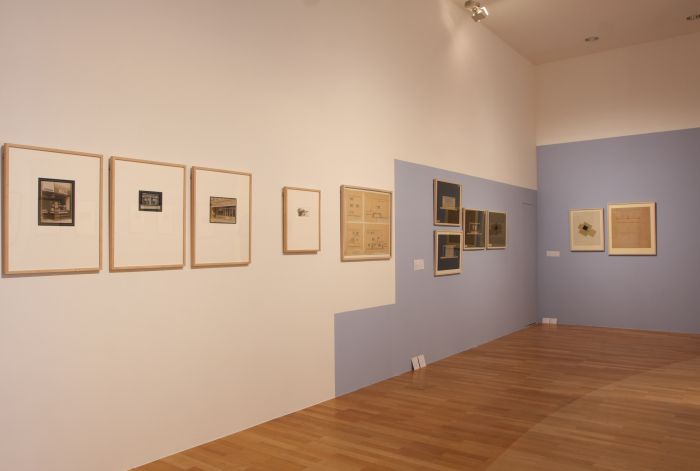

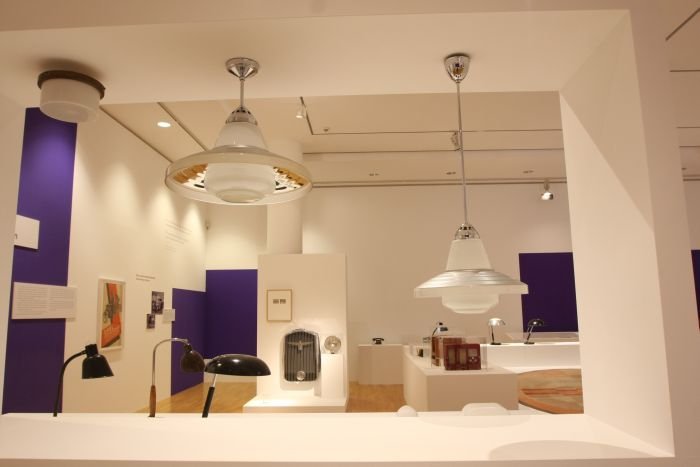
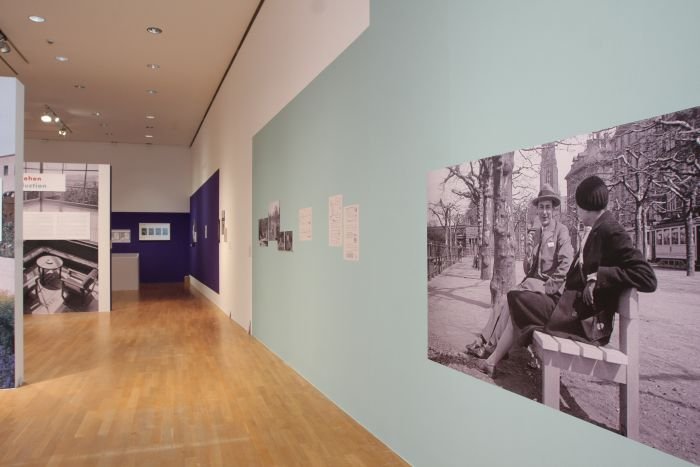
Full details, including information on the accompanying fringe programme, can be found at www.museumangewandtekunst.de